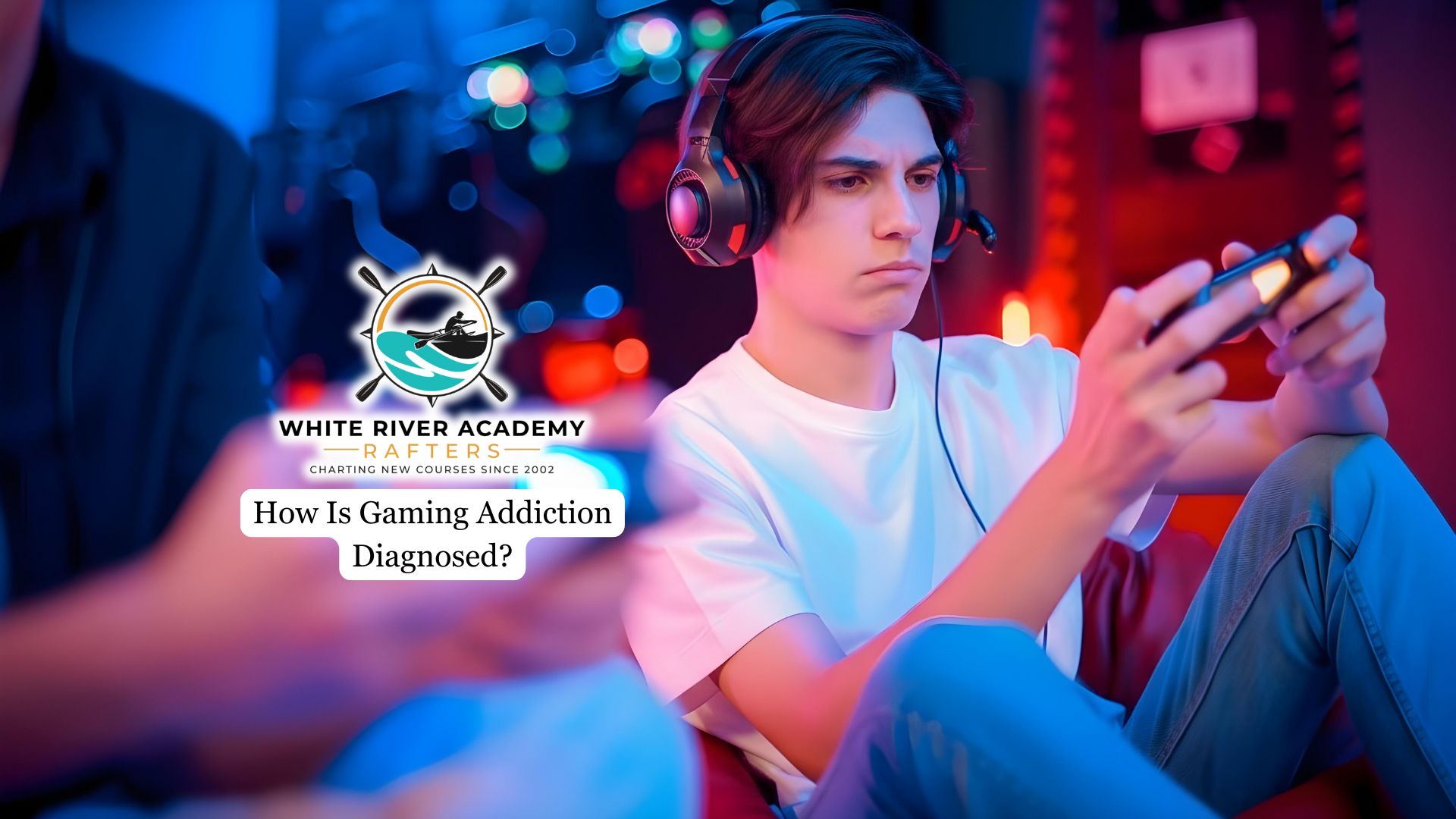For most, gaming is a fun way to relax or connect with others. However, there are instances where the use of technology becomes difficult to control. This condition, often called gaming addiction or Internet Gaming Disorder (IGD), is increasingly recognized as a serious behavioral health concern.
Understanding how IGD is diagnosed is important, as it helps distinguish between healthy enthusiasm and a condition that requires professional support. This article includes established criteria, structured tools, and thorough evaluations that clinicians use to determine when interactive entertainment use has crossed addiction.
What Is Gaming Addiction?
Video game overuse occurs when playing video games shifts from being an enjoyable pastime to a behavior that dominates daily life. The American Psychiatric Association includes IGD in the Diagnostic and Statistical Manual of Mental Disorders (DSM-5) as a condition for further study, while the World Health Organization formally classifies IGD in the International Classification of Diseases (ICD-11).
Both organizations describe it as a persistent or recurring pattern of playing video games that results in significant problems at home, school, work, or in relationships. This recognition shows that this is not simply “too much screen time.” Instead, it is a behavioral health issue comparable to other compulsive disorders, requiring careful evaluation by trained professionals.
For many families, seeking professional treatment for teen gaming addiction can provide the structure and support needed to restore balance. The time it takes to overcome excessive playing varies widely and depends on factors such as the severity of the behavior, the presence of co-occurring mental health conditions, and the type and consistency of treatment used.
Diagnostic Criteria for Gaming Addiction
Health professionals use specific diagnostic guidelines to determine whether interactive entertainment use has reached the level of addiction. In the DSM-5, IGD is identified when an individual displays at least five of nine possible symptoms within 12 months. These include preoccupation with video games, withdrawal symptoms when not playing, needing to play more to achieve the same satisfaction or tolerance, repeated failed attempts to cut back, losing interest in other activities, continuing despite negative consequences, deceiving others about habits, using it to escape negative moods, and risking or losing important relationships or opportunities.
The ICD-11 outlines a narrower set of requirements. A diagnosis is made when all three of the following are present: impaired control over the behavior, prioritizing play over other important life activities, and continuing or escalating use despite clear harm.
Common Screening and Diagnostic Tools
To help identify the severity of video game overuse, clinicians often use evidence-based screening tools. Some of the most common include the IGD Scale – Short Form (IGDS-SF), the IGD Checklist, the Problematic Video Game Playing (PVP) Scale, and the Internet Gaming Withdrawal Scale. Each of these tools relies on questionnaires or rating systems that ask individuals about their playing habits, emotional responses, and how this behavior impacts their daily responsibilities.

These are designed to measure behavioral patterns such as loss of control, emotional regulation, and functional impairment. However, it is important to note that they are only screening aids. While they provide useful insights, they are not standalone diagnostic measures.
A formal diagnosis of IGD requires a comprehensive evaluation by a qualified mental health professional, often involving clinical interviews and assessment of broader life impacts.
What Happens During a Diagnosis
The diagnostic process typically begins with a clinical interview, during which a professional evaluates the individual’s behavior using the DSM-5 or ICD-11 criteria. To gain a fuller picture, self-report questionnaires may be used, and for adolescents, observations from parents, caregivers, or teachers are often included to assess how excessive play affects school, home life, and relationships.
An equally important step is checking for co-occurring conditions. Research shows that people who struggle with this disorder frequently experience depression, anxiety, or ADHD. Identifying these underlying issues is essential, as effective treatment must address both the compulsive behavior itself and the broader mental health concerns that often accompany it.
Challenges in Diagnosing Video Game Overuse
In the U.S., the DSM-5 still lists IGD as a condition requiring further study, meaning it is not yet fully established as a clinical diagnosis. This creates variability in recognition, treatment approaches, and insurance coverage.
Symptoms can also manifest differently in each individual. Some may withdraw from social life entirely, while others might only show gradual declines in sleep, grades, or job performance. Distinguishing between high engagement, such as competitive esports participation, and addiction adds another layer of complexity.
Final Thoughts from White River Academy
Gaming addiction is a growing concern, but it isn’t defined simply by the number of hours spent playing. A true diagnosis requires careful evaluation using established criteria, structured screening tools, and professional interviews. Understanding how excessive playing is identified helps families and individuals recognize when it may be time to seek support.
At White River Academy, we provide specialized gaming addiction treatment for adolescent boys in Utah. Our program is designed to address the unique challenges that arise when excessive screen time begins to disrupt social life and overall well-being. Through a comprehensive approach that blends evidence-based therapies, life skills training, and holistic interventions, we help teens break unhealthy patterns and build healthier, more sustainable habits for the future.




